
How to Use USB Charger for bike: Examples, Pinouts, and Specs
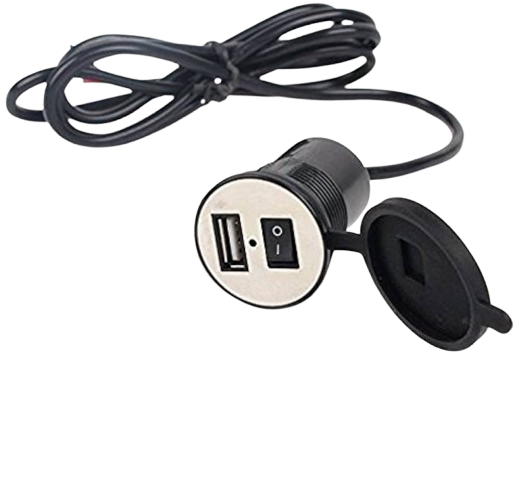
 Design with USB Charger for bike in Cirkit Designer
Design with USB Charger for bike in Cirkit DesignerIntroduction
The USB Charger for Bike is a versatile device designed to convert the electrical energy generated by a bicycle's dynamo or battery into a USB-compatible output. This allows cyclists to charge electronic devices such as smartphones, GPS units, and other USB-powered gadgets while riding. This component is particularly useful for long-distance cyclists, bike commuters, and outdoor enthusiasts who need to keep their devices powered on the go.
Explore Projects Built with USB Charger for bike
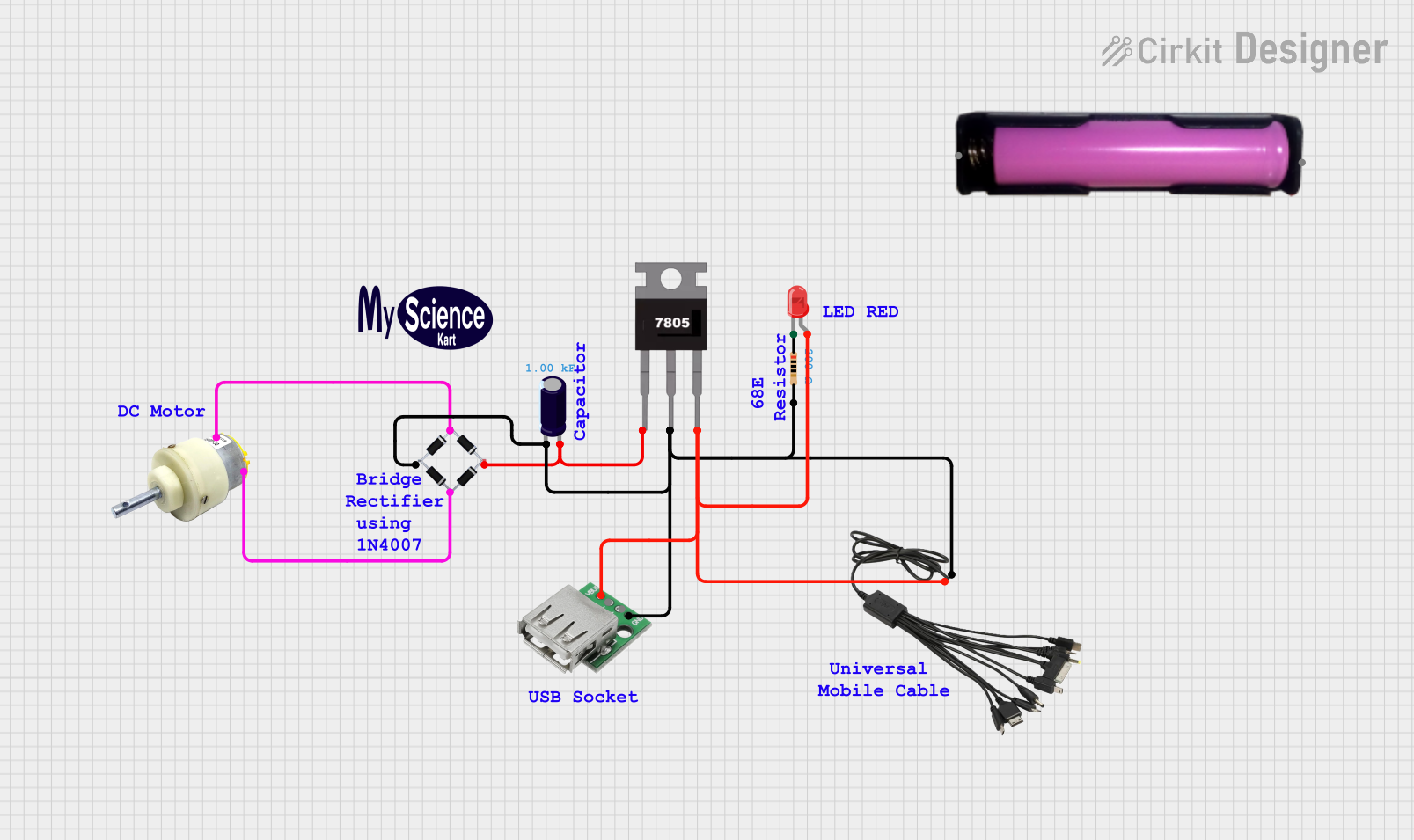
 Open Project in Cirkit Designer
Open Project in Cirkit Designer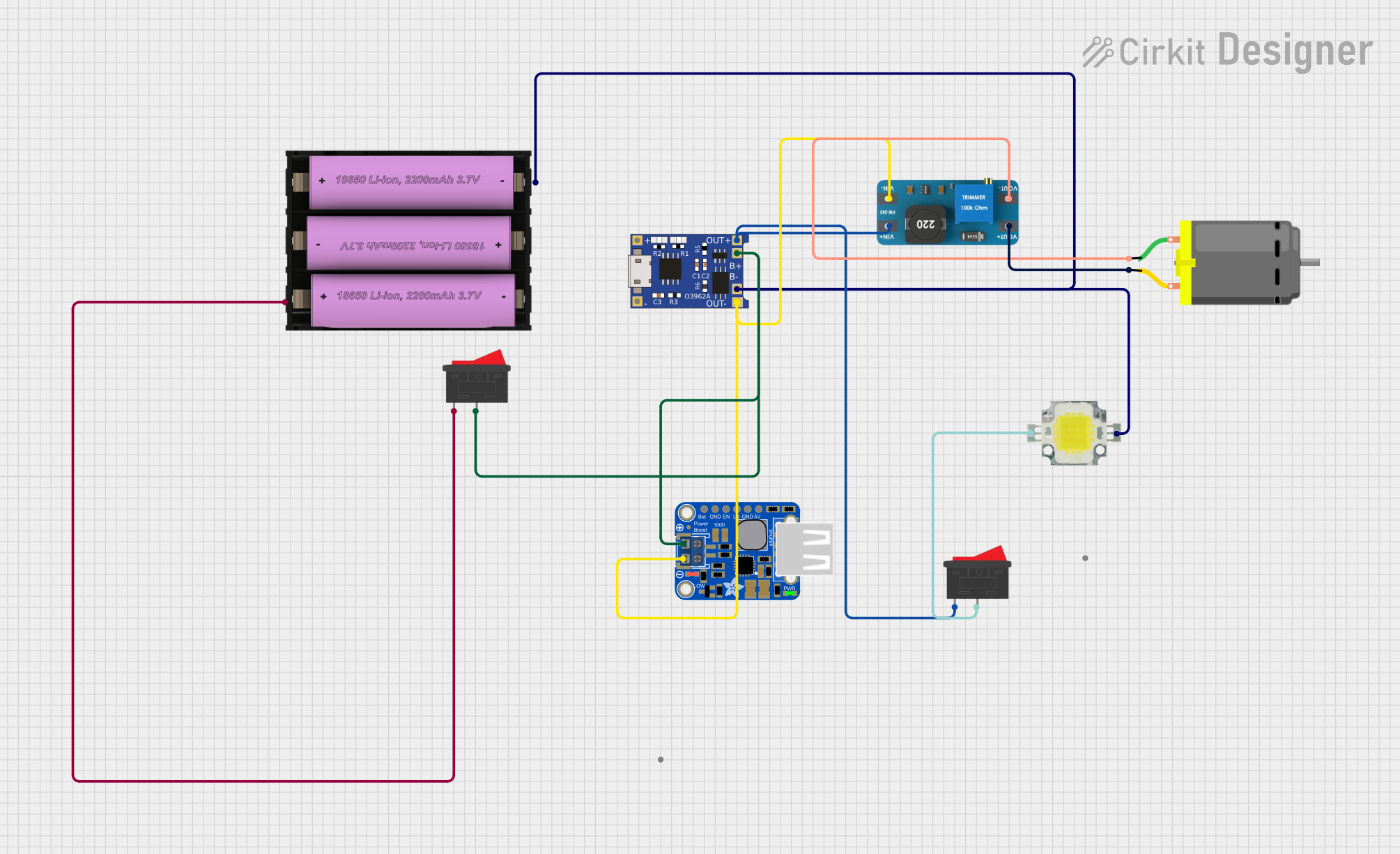
 Open Project in Cirkit Designer
Open Project in Cirkit Designer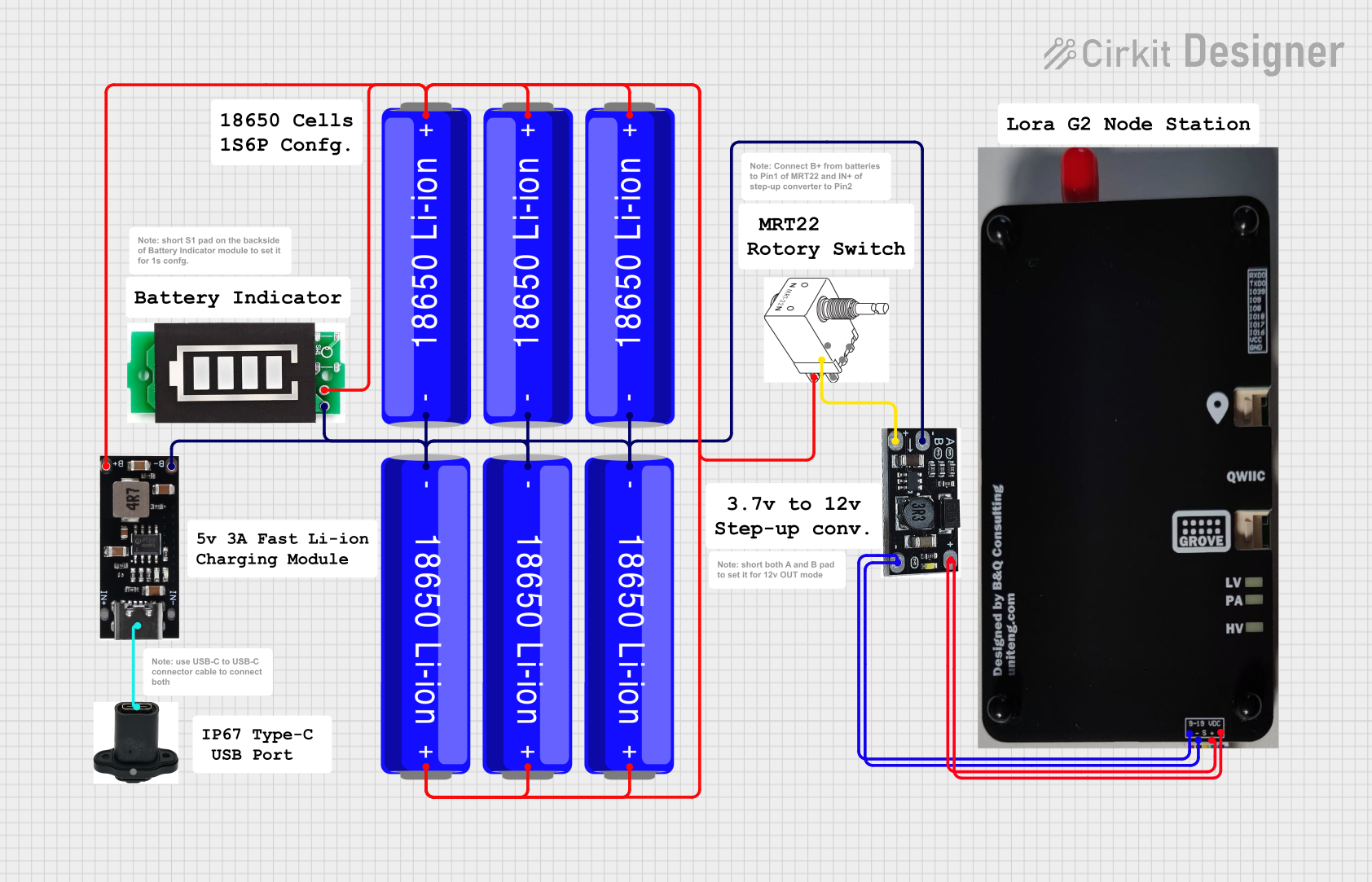
 Open Project in Cirkit Designer
Open Project in Cirkit Designer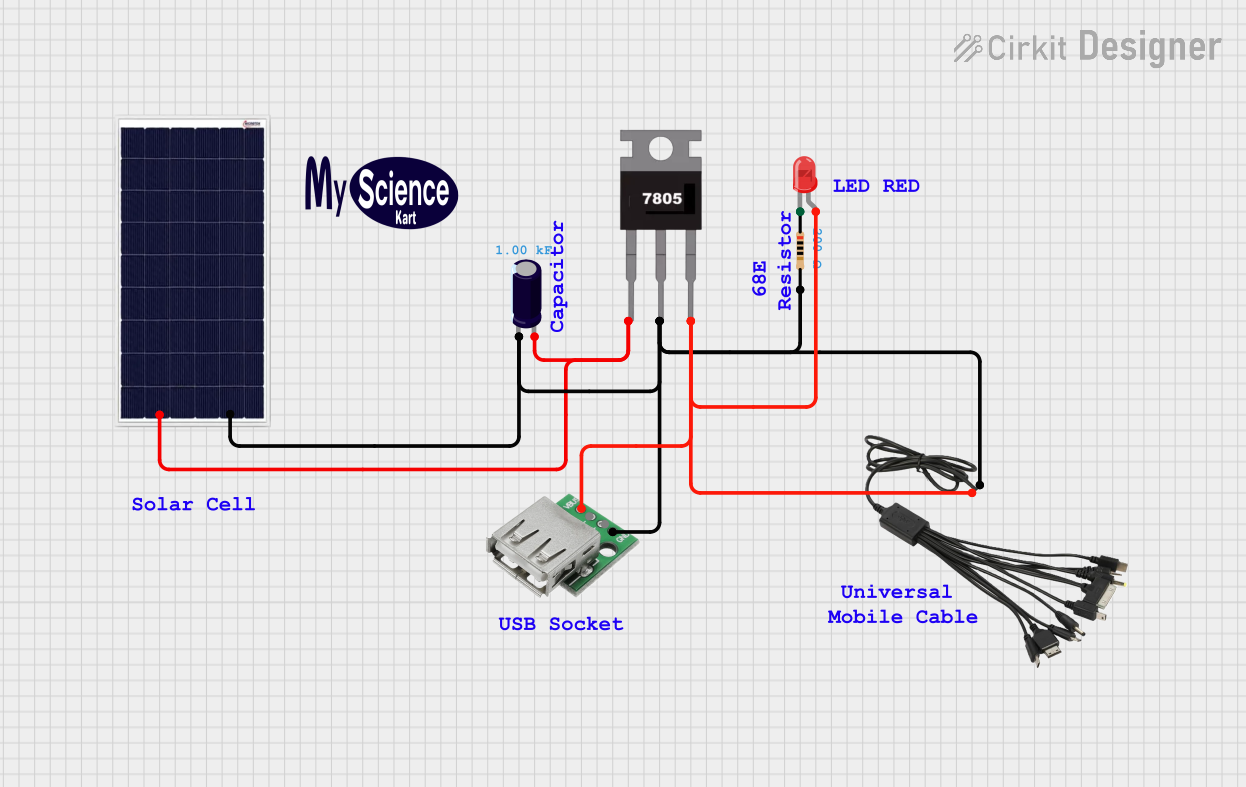
 Open Project in Cirkit Designer
Open Project in Cirkit DesignerExplore Projects Built with USB Charger for bike

 Open Project in Cirkit Designer
Open Project in Cirkit Designer
 Open Project in Cirkit Designer
Open Project in Cirkit Designer
 Open Project in Cirkit Designer
Open Project in Cirkit Designer
 Open Project in Cirkit Designer
Open Project in Cirkit DesignerTechnical Specifications
Key Technical Details
| Parameter | Value |
|---|---|
| Input Voltage | 6V - 12V (AC/DC) |
| Output Voltage | 5V (DC) |
| Output Current | 1A (max) |
| Power Rating | 5W |
| Efficiency | 85% |
| USB Port | Standard USB Type-A |
| Protection | Over-voltage, Over-current |
| Dimensions | 50mm x 30mm x 20mm |
| Weight | 30g |
Pin Configuration and Descriptions
| Pin No. | Pin Name | Description |
|---|---|---|
| 1 | V_in | Input voltage from dynamo or battery (6V - 12V) |
| 2 | GND | Ground |
| 3 | USB+ | USB positive data line (for data transfer) |
| 4 | USB- | USB negative data line (for data transfer) |
| 5 | V_out | 5V output to USB port |
Usage Instructions
How to Use the Component in a Circuit
Connect the Input Voltage:
- Connect the V_in pin to the output of your bicycle's dynamo or battery. Ensure the input voltage is within the range of 6V to 12V.
- Connect the GND pin to the ground of your dynamo or battery.
Connect the USB Device:
- Plug your USB device into the USB Type-A port of the charger.
Mounting:
- Securely mount the USB charger on your bicycle frame using zip ties or a mounting bracket to prevent it from moving during the ride.
Important Considerations and Best Practices
- Voltage Range: Ensure the input voltage is within the specified range (6V - 12V). Exceeding this range can damage the charger.
- Waterproofing: If you plan to use the charger in wet conditions, ensure it is properly waterproofed or housed in a waterproof enclosure.
- Heat Dissipation: Avoid placing the charger in a location where it can overheat. Ensure adequate ventilation.
- Cable Management: Use cable ties to manage and secure cables to prevent them from getting caught in the bike's moving parts.
Troubleshooting and FAQs
Common Issues Users Might Face
No Output Voltage:
- Solution: Check the input voltage to ensure it is within the specified range. Verify all connections are secure and correct.
Device Not Charging:
- Solution: Ensure the USB cable and device are functioning properly. Try using a different USB cable or device to isolate the issue.
Overheating:
- Solution: Ensure the charger is not placed in a confined space without ventilation. Check for any obstructions that may be blocking airflow.
FAQs
Q: Can I use this charger with any USB device? A: Yes, as long as the device requires a 5V input and does not exceed 1A current draw.
Q: Is the charger compatible with both AC and DC input? A: Yes, the charger can accept both AC and DC input within the range of 6V to 12V.
Q: How do I know if the charger is working? A: Most chargers have an LED indicator that lights up when the charger is receiving power and functioning correctly.
Q: Can I use this charger in rainy conditions? A: Yes, but ensure the charger is properly waterproofed or housed in a waterproof enclosure to prevent damage.
Example Code for Arduino UNO
If you want to monitor the charging status using an Arduino UNO, you can use the following code. This example assumes you have connected the charger's output to the Arduino's analog input pin A0.
// Define the analog input pin
const int analogPin = A0;
// Define the threshold voltage (in millivolts)
const int thresholdVoltage = 4500; // 4.5V
void setup() {
// Initialize serial communication at 9600 baud rate
Serial.begin(9600);
}
void loop() {
// Read the analog input value
int sensorValue = analogRead(analogPin);
// Convert the analog value to voltage (in millivolts)
float voltage = sensorValue * (5.0 / 1023.0) * 1000;
// Print the voltage to the serial monitor
Serial.print("Voltage: ");
Serial.print(voltage);
Serial.println(" mV");
// Check if the voltage is above the threshold
if (voltage > thresholdVoltage) {
Serial.println("Charging...");
} else {
Serial.println("Not Charging...");
}
// Wait for 1 second before the next reading
delay(1000);
}
This code reads the voltage from the charger's output and prints it to the serial monitor. It also indicates whether the connected device is charging based on a threshold voltage.
By following this documentation, you should be able to effectively use and troubleshoot the USB Charger for Bike, ensuring your devices stay powered during your rides.